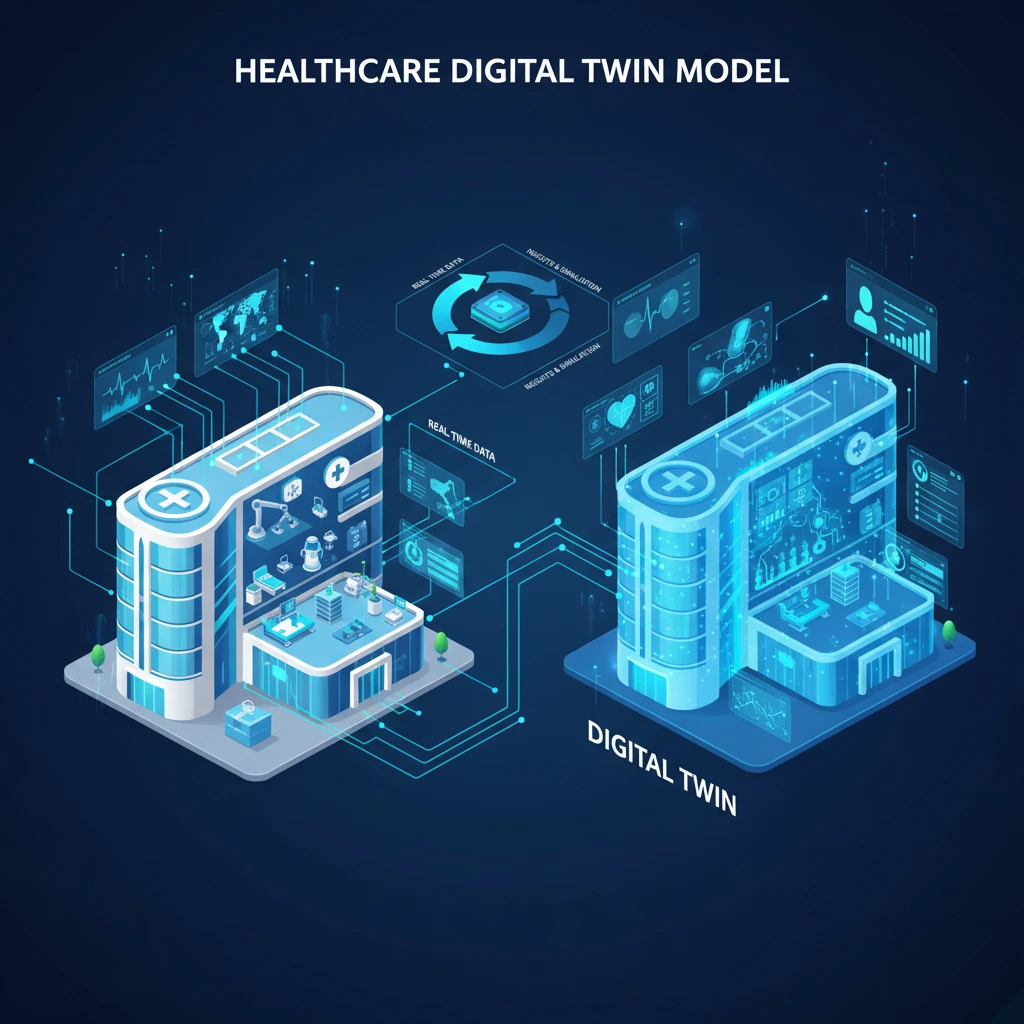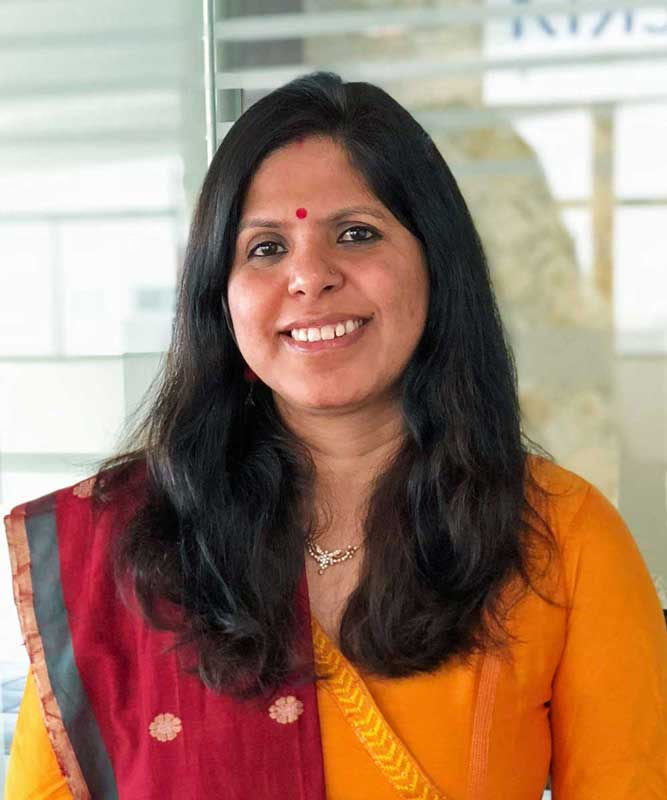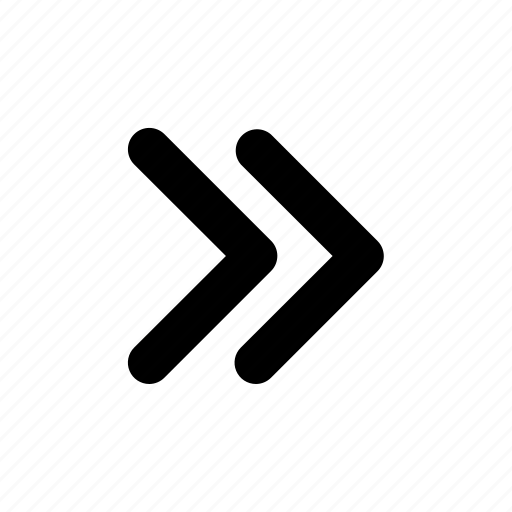Digital Twins in Healthcare: A Complete Guide
Hospitals operate with constant uncertainty. Patient arrivals are unpredictable. Equipment breaks at inconvenient times. Staffing needs shift hour by hour. Emergency situations demand immediate resource reallocation.
Traditional management approaches rely on historical patterns that may not reflect current conditions, leading to bottlenecks and inefficiencies.
Digital twin in healthcare technology creates virtual models that update continuously with actual operational data. Instead of managing based on yesterday's reports, healthcare leaders can work with information reflecting current conditions throughout their facilities.
What is a DT in Healthcare?
A DT (Digital Twin) in healthcare is a virtual model that mirrors either facility operations or individual patient conditions. When modeling facilities, it's often called a hospital twin.
The model pulls data continuously from multiple sources. Electronic Health Records provide patient information. IoT sensors track medical equipment. Staff scheduling systems show coverage. Patient flow monitors reveal bottlenecks in real-time.
Digital twin software platforms integrate these disparate data sources into unified models. The challenge is that healthcare data comes from systems that weren't designed to work together, making integration technically complex and expensive.
Optimizing Hospital Workflows via Digital Twin
Hospital leaders focused on efficiency can use a hospital twin for several applications related to optimizing hospital workflows:
Risk-Free Process Simulation
Want to redesign the ER layout? Test a new staffing model? The digital twin lets you simulate changes virtually before implementing them physically. You can identify bottlenecks and predict outcomes without disrupting actual operations.
However, simulation accuracy depends entirely on model quality. If the underlying data or assumptions are flawed, predictions won't match reality when changes get implemented.
Smarter Resource Management
Analyzing patient data and historical patterns helps forecast demand for operating rooms, ICU beds, and other critical resources. This allows proactive allocation rather than scrambling when capacity gets tight.
Prediction accuracy varies significantly though. Unexpected events like accidents or disease outbreaks can overwhelm even sophisticated forecasting models.
Dynamic Staff Allocation
Dynamic staff allocation can optimise nursing and physician schedules based on predicted patient arrivals and acuity levels. The goal is having appropriate staffing when and where needed, preventing both understaffing and burnout.
Proactive Facility Management
A hospital twin can monitor energy usage across departments, track mobile equipment locations, predict maintenance needs for hospital infrastructure. This can prevent unexpected equipment failures that disrupt patient care.
Beyond Operations: Improving Patient Outcomes
Operational efficiency is one thing, but digital twins are also being explored for direct clinical applications. These use cases go beyond hospital management into actual patient treatment decisions.
Truly Personalized Medicine
You can create virtual models of individual patients based on their unique physiology and health data. Clinicians could simulate how different treatments might affect that specific person before administration, potentially improving outcomes and reducing adverse reactions.
The data requirements and validation challenges for patient-specific twins are substantial though. Most healthcare systems lack the infrastructure and expertise needed for widespread implementation.
Enhanced Surgical Planning
Surgeons can use patient-specific digital twins created from medical scans to rehearse complex procedures virtually. This allows detailed planning and may improve surgical precision.
High-profile surgical centers use this now for complex cases. Broader adoption faces cost barriers and workflow integration challenges.
Proactive Remote Care
Integrate data from patient wearables and home monitoring devices into digital twins that alert clinicians to potential health issues before they become critical.
This requires patients to consistently use monitoring devices and clinicians to have capacity to respond to alerts, both of which create practical implementation challenges.
Click here to learn more about how hospital twins are being used by healthcare facilities.
FAQs
What is an example of a digital twin in healthcare?
The most straightforward example of a digital twin is a hospital twin that tracks patient flow throughout a facility. It pulls data from admissions systems, bed management, staff schedules, and real-time location tracking.
Hospital administrators can see where bottlenecks are developing right now and run quick simulations to figure out if different bed assignments or staffing adjustments would help.
It's basically giving them a live overview of hospital operations instead of relying on reports from yesterday or last week.
What are digital twins in pharma?
Pharmaceutical companies use digital twins pretty heavily across different stages of drug development. They'll model manufacturing lines to troubleshoot production problems without shutting down actual equipment. Some companies simulate clinical trial results to get early predictions about whether a drug candidate is worth pursuing.
What are the digital twins for population health?
Digital twins for population health zoom way out to model entire communities or regions. Public health departments feed in anonymized patient records, demographic information, environmental data, disease surveillance reports. The model can simulate how an infectious disease might spread or predict which neighborhoods would benefit most from new health clinics.
What software is used for digital twins?
There's no single standard for digital twin software. Major tech companies like Siemens, GE Digital, Microsoft, and AWS all have platforms that handle data integration, visualization, and simulation. Healthcare-specific vendors offer solutions tailored to medical applications with features like EHR integration and HIPAA compliance built in. Which platform works best depends heavily on what you're trying to model, what systems you already have, and whether your IT team has experience with that particular technology stack.
What is a digital twin of a software system?
A digital twin of a software system is basically a working copy of your IT infrastructure that you can test changes on without touching the production environment. Hospitals use this to test electronic health record updates, simulate what happens when user loads spike, or figure out if new integrations will cause problems before going live.
Kavita has been adept at execution across start-ups since 2004. At KiKsAR Technologies, focusing on creating real life like shopping experiences for apparel and wearable accessories using AI, AR and 3D modeling


